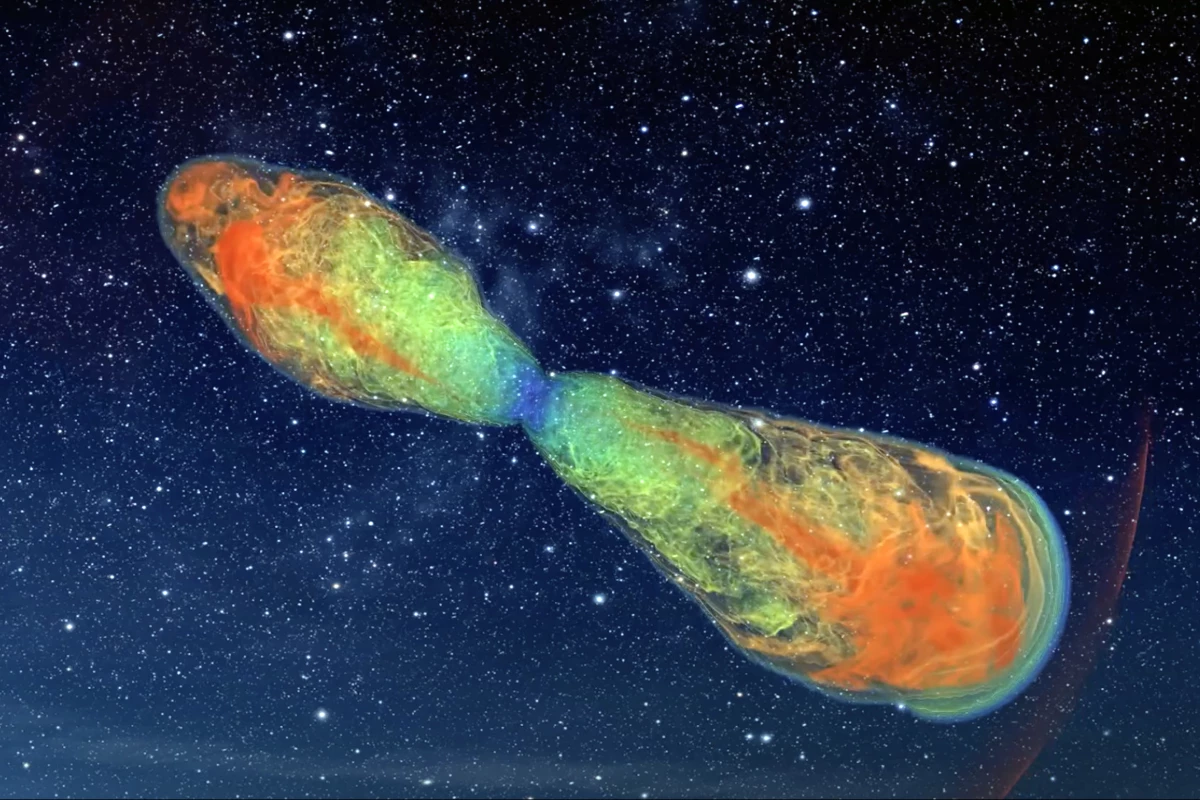Until now, we’ve only detected gravitational waves originating in binary systems, from the merger of black holes or neutron stars. But researchers from Northwestern University have potentially discovered a new non-binary source of gravitational waves: the debris ‘cocoon’ that forms around a dying massive star.
Gravitational waves are invisible but incredibly fast ripples in spacetime caused by some of the most violent, energetic processes in space. Traveling at the speed of light, gravitational waves squeeze and stretch anything they pass.
The Laser Interferometer Gravitational-Wave Observatory (LIGO) in the US is specially designed to detect gravitational waves. Like the Virgo interferometer in Italy and the Kamioka Gravitational Wave Detector (KAGRA) in Japan, LIGO allows scientists to use the information they collect to analyze our universe. Until now, gravitational waves have been observed from binary systems, two astronomical bodies – like black holes or neutron stars – close enough that their gravitational attraction causes them to orbit one another.
Now, researchers at Northwestern University, Illinois, say we can measure gravitational waves originating from a single, non-binary source: the ‘cocoons’ of debris around dying massive stars.
“As of today, LIGO has only detected gravitational waves from binary systems, but one day it will detect the first non-binary source of gravitational waves,” said Ore Gottlieb, lead author of the study. “Cocoons are one of the first places we should look to for this type of source.”
A core-collapse supernova is a massive star that has undergone gravitational collapse and is in the last stages of life. Its collapse is associated with long-duration gamma-ray bursts that appear as energetic jets, which cause stellar material to form an hourglass-shaped cocoon as they're forced out of the star.
“A jet starts deep inside of a star and then drills its way out to escape,” said Gottlieb. “It’s like when you drill a hole into a wall. The spinning drill bit hits the wall and debris spills out of the wall. The drill bit gives that material energy. Similarly, the jet punches through the star, causing the star’s material to heat up and spill out. This debris forms the hot layers of a cocoon.”
The researchers used simulations to model the collapse of a massive star, from the time the star collapses into a black hole until the jet escapes. For the first time, they demonstrated that a cocoon could emit detectable gravitational waves. This, say the researchers, is preferable to looking for gravitational waves from gamma-ray bursts or supernovae, which occur at a frequency LIGO may not be able to detect.
“Supernovae are rather spherical and symmetrical, so spherical explosions do not change the balanced mass distribution in the star to emit gravitational waves,” Gottlieb said. “Gamma-ray bursts last dozens of seconds, so the frequency is very small – lower than the frequency band that LIGO is sensitive to.”
On the other hand, cocoons are asymmetrical and highly energetic, which, the researchers say, should mean LIGO picks them up. And they have the potential to provide additional information.
“Our study is a call to action to the community to look at cocoons as a source of gravitational waves,” said Gottlieb. “We also know cocoons emit electromagnetic radiation, so they could be multi-messenger events. By studying them, we could learn more about what happens in the innermost part of stars, the properties of jets and their prevalence in stellar explosions.”
The study was published in the journal ArXiv and the below video, produced by Northwestern University, illustrates how a dying star's cocoon would produce a gravitational wave.
Source: Northwestern University





